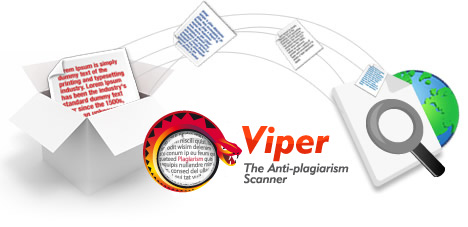UJI ANTAGONIS Aspergillus sp. DAN Trichoderma spp. TERHADAP Fusarium sp., PENYEBAB PENYAKIT REBAH KECAMBAH PADA SENGON
Sari
Fungi endofit merupakan kelompok fungi yang dapat dikembangkan sebagai agen pengendali hayati. Studi mengenai potensi fungi endofit sudah banyak dilakukan untuk tanaman pertanian, namun masih sedikit untuk tanaman kehutanan. Penelitian ini dilakukan untuk melihat aktivitas antagonis dua isolat dari kelompok Aspergillus dan Trichoderma terhadap Fusarium sp. penyebab penyakit rebah kecambah pada sengon. Penghambatan tertinggi pada hari ketujuh ditunjukkan oleh Trichoderma harzianum Bio1999, yaitu sebesar 46,36% dan selanjutnyberturut-turut diikuti isolat Aspergillus sp. JTB 105, T. viride Bio19232, dan Aspergillus sp. STB 107 masing-masing sebesar 41,72%; 31,13% dan 28,48%. Penghambatan terhadap Fusarium sp. terjadi melalui mekanisme mutual inhibisi. Berdasarkan panjang zona inhibisi yang terbentuk, isolat Aspergillus sp. JTB105 menunjukkan hasil yang tertinggi, yaitu sebesar 2,25 mm dan selanjutnya berturut-turut diikuti isolat T. harzianum Bio1999, T. viride Bio19232 dan Aspergillus sp. STB 107 masing-masing sebesar 1,50 mm; 1, 00 mm dan 0,75 mm.
Kata Kunci
Teks Lengkap:
pdfReferensi
Anggraeni, I., Lelana N.E., & Darwiati, W. (2010). Pengelolaan hama dan penyakit hutan tanaman.Sintesis Hasil-hasil Penelitian Lingkup Pusat Penelitian dan Pengembangan Hutan Tanaman Tahun 2003-2009.
Bateman, R. (2002). Bestbet solutions for cocoa diseases. Gro-Cocoa Newsletter 1: 4-5.
Dai C.C., Yu, B.Y., & Li, X. (2008). Screening of endophytic fungi that promote the growth of Euphorbia pekinensis. Afr. J. Biotechnol. 7:-3509.
Fujiwara, A., Okuda, T., Masuda, S., Shiomi, Y., Miyamoto, C., Sekine, Y., Tazoe, M., & Fujiwara, M. (1982). Fermentation, isolation and characterization of isonitrile antibiotics. Agric. Biol. Chem. 46:1803-1809.
Gomathi, S., & Ambikapathy, V. (2011). Antagonistic activity of fungi against Pythium debaryanum (Hesse) isolated from Chilli field soil. Adv. App. Sci. Res. 2 (4): 291-297
Harman, G.E., Howell, C.R., Viterbo, A., Chet, I., Loritto, M. (2004). Trichoderma species opportu-nistic, avirulent plant symbionts. Nat. Rev. Microbiol. 2: 43-56.
Hasan, A.E., Walker, F., Schöne, J., & Buchenauer, H. (2007). Antagonistic effect of 6-pentylalphapyrone produced by Trichoderma harzianum toward Fusarium moniliforme. J. Plant Dis. Protect. 114 (2): 62-68.
Hasegawa, Y., Fukuda, T., Hagimori, K., Tomoda, H., & Omura, S. (2007). Tensyuic acids, new antibiotics produced by Aspergillus niger FKI- 2342. Chem. Pharm. Bull. 55 (9) : 1338-1341.
Jeyaseelan, E.C., Tharmila, S., & Niranjan, K. (2012). Antagonistic activity of Trichoderma spp. and Bacillus spp. against Pythium aphanidermatum isolated from tomato damping off. Arch. App. Sci. Res. 4 (4):1623-1627.
Lewis, G.C. (2004). Effects of biotic and abiotic stress on the growth of three genotypes of Lolium perenne with and without infection by the fungal endophyte Neotyphodium lolii. Ann. Appl. Biol. 144: 53-63.
Lone, M.A., Wani, M.R., Sheikh, S.A., Sahay, S. Dar M.S. (2012). Antagonistic Potentiality of Trichoderma harzianum Against Cladosporium spherospermum, Aspergillus niger and Fusarium oxysporum. J. Biol. Agr. Healthcare 2 (8): 72-76.
Lorito, M. (1998). Chitinolytic enzymes and their genes. In C.P. Kubicek & G.E. Harman eds. Trichoderma and Gliocladium Vol 2. London: Taylor and Francis
Mejia, L.C., Rojas, E.I., Maynard, Z., Van Bael, S., Arnold, A. E., Hebbar, P., Samuels, G.J., Robbins, N., Herre, E.A. (2008). Endophytic fungias biocontrol agents of Theobroma cacaopathogens. Biol. Control 46 (4):14.
Mishra, V.K. (2010). In vitro antagonism of Trichoderma species against Pythium aphanidermatum. J. Phytol. 2(9): 28-35.
Monte, E. (2001). Understanding Trichoderma: between biotechnology and microbial ecology. Int. Microbial 4: 1-4.
Prince, L., Raja, A., & Prabakaran, P. (2011). Antagonistic potentiality of some soil mycoflora against Colletotrichum falcatum. World J.Sci. and Technol. 1(4): 39-42.
Rajeswari, P. & Kannabiran, B. (2011). In vitro effects of antagonistic microorganisms on Fusarium oxysporum [Schlecht. Emend. Synd & Hans] infecting Arachis hypogaea L. J. Phytol. 3(3): 83-85.
Saikkonen, K., Faeth, S.H., Helander, M., & Sullivan, T. J. (1998). Fungal Edophytes: A continuum of interactions with host plants. Ann. Rev. of Ecol. Systemat. 29: 319-343
Shakeri, J. & H.A. Foster. (2007). Proteolytic activity and antibiotic production by Trichoderma harzianumin relation to pathogenicity to insects. Enzyme and Microb. Technol. 40 (4): 961-968.
Sharfuddin, C. & Mohanka R. (2012). In vitro antagonism of indigenous Trichoderma isolatesagainst phytopathogen causing wilt of lentil. Int. J. Life Sci. and Pharma Res. 2 (3): 195-202.
Sharma, P. (2011). Complexity of Trichoderma Fusarium interaction and manifestation of biological control. Australian J of Crop Sci. 5(8): 1027-1038.
Stone J.K., Bacon, C.W., White Jr, J.F. (2000). Anoverview of endophytic microbes: endophytism defined. In: Bacon, C.W., White, J.F.,r. (Eds.). Microbial Endophytes. New York, Marcel Dekker, pp. 3-30.
Vega, F.E., Posada, F., Aime, M.C., Pava-Ripoll, M., Infante, F., Rehner, S.A. (2008). Entomopathogenic fungal endophytes. Biol. Control 46: 72-82.
Xue, H., Lu, C., Liang, L., Shen, Y. (2012). Secondary Metabolites of Aspergillus sp. CM9a, an Endophytic Fungus of Cephalotaxus mannii. Rec. Nat. Prod. 6 (1): 28-34
DOI: https://doi.org/10.20886/jpht.2015.12.1.23-28
##submission.copyrightStatement##
JURNAL PENELITIAN HUTAN TANAMAN INDEXED BY:
Copyright of Jurnal Penelitian Hutan Tanaman (JPHT)
eISSN : 2442-8930 pISSN : 1829-6327
JPHT is licensed under a Creative Commons Attribution-NonCommercial-ShareAlike 4.0 International License.

